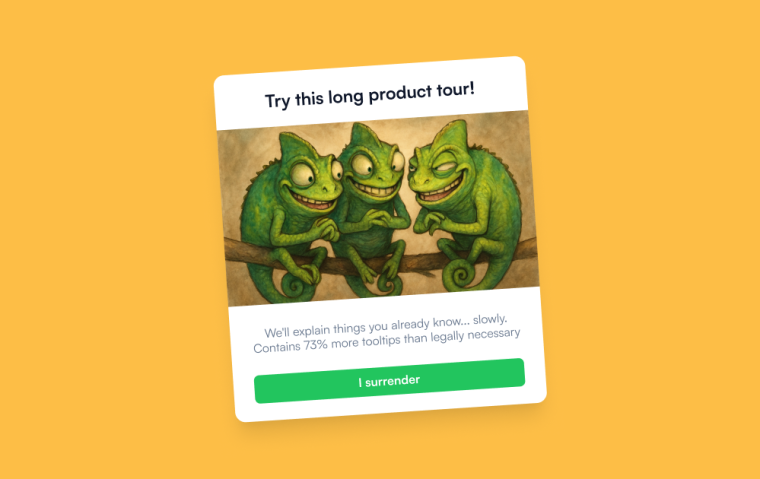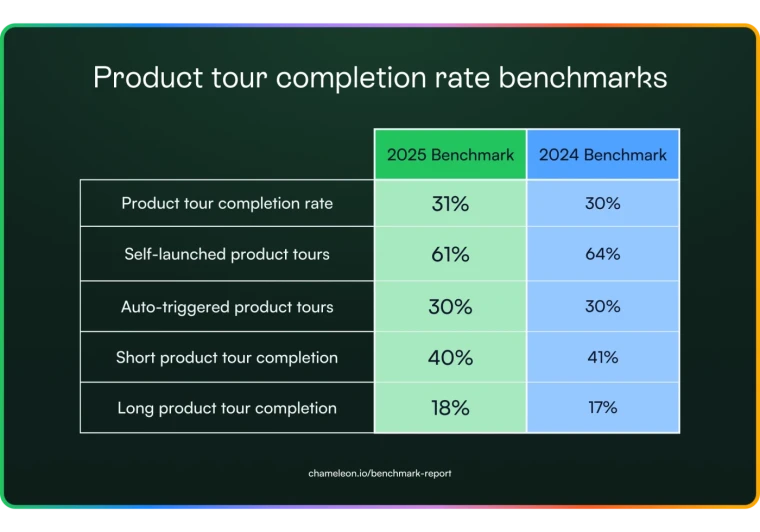
You can’t learn to ride a bike by watching a video. You learn to ride a bike by riding a bike. If you’re lucky, you’ll be balanced and moving on two wheels in no time. If you’re less lucky, like me, perhaps you’ll end up with some scrapes and bruises along the way.
Let me take you back to an onboarding experience at one of my first jobs. Amongst other things, part of my onboarding was to learn a software tool we used to manage our customers’ accounts. It was a complicated tool, but I learned quickly — entirely because of the way the training was designed. I essentially ran through scenarios in full-on simulations of the product. I mastered everything quite quickly, and when I used the tool live with our customers, the transition was seamless.
Contrast that to a different onboarding experience I had in a new role — one that wasn’t quite as positive. I had to learn a tool we used to manage customer pricing quotes. I expected that I would be similarly trained through simulations. Interacting with the product was what helped me learn so well the last time. Boy, was I naive; my training didn’t include interacting with the product at all. I was sent a Powerpoint deck, with a stack of screenshots, and a seemingly endless number of slides. That was the training.
Somehow, I learned to use the program, but not efficiently, and not without messing up some things along the way. To say this was a frustrating experience is an understatement. Thinking about this experience recently led me to want to further understand how to make product learning more effective.
KNOWLES’S FOUR PRINCIPLES OF LEARNING
Malcolm Knowles, a well-known American educator, developed a theory of the four basic principles of adult learning.
- Adults learn best if they know why they’re learning something.
- Adults often learn best through experience.
- Adults tend to view learning as an opportunity to solve problems.
- Adults learn best when the topic is relevant to them and immediately applicable.]
The second principle, learning best through experience, was a critical missing component in my last example. It’s no wonder I didn’t have a good experience. When applied to products, it makes sense that Product Managers, Marketers, and Designers should focus on all four of these principles. They should continuously validate whether they are addressing the most effective ways to help users learn.
ONBOARDING WITH CONTEXT
“Onboarding” describes the process of introducing and orienting new users to a product.
The problem with screenshots, help guides, and even user manuals, is that a user does not have any context for what they’re doing (Knowles’s first principle). A user needs to be able to relate their actions and clicks into the overall navigation of a product.
In the same way that a pile of screenshots wasn’t very helpful in my learning experience, a long video or extensive help manual isn’t very effective in helping new users learn your product. The best learning happens in-app, right where your customer is going to be (Knowles’s fourth principle).
Allowing users to interact with your product is key.
ACTION-BASED LEARNING
In a study conducted by the University of Chicago, researchers set out to test the effectiveness of interactive, hands-on learning. In a physics course, students were randomly assigned to either action-based (hands-on) learning roles, or observation-based roles. The students in the action-based group scored higher than the observation group by roughly 7 percent on quizzes, despite having similar grades during other tests. Brain scans indicated that the action-based learning group had increased activation in motor and sensory areas of the brain.
Professor Sian Beilock directed the study, and is the author of the book How the Body Knows Its Mind. According to Beilock, “In many situations, when we allow our bodies to become part of the learning process, we understand better. Reading about a concept in a textbook or even seeing a demonstration in class is not the same as physically experiencing what you are learning about.”
TURN LEARNING INTO PASSION
In your product’s onboarding flow, whether you’re focused on conversion, customer retention, or something else, your ultimate goal should be to make your users passionate about your product.
Kathy Sierra is well-known for pioneering the concept of building badass users. When it comes to getting users to love your product, she has some sound advice:
“Passion requires real learning. Nobody is passionate about skiing on their first day. Nobody is passionate about programming in Java on their first day. Or week. It’s virtually impossible to become passionate about something until you’re somewhere up the skill/knowledge curve, where there are challenges that you believe are worth it, nd that you perceive you can do.”
Your job is to get your users to that sweet spot on the knowledge curve.
The sweet spot being that perfect tradeoff where you show them how to do some valuable things in your site or app, but also allow for self-discovery. There’s no need to show them obvious things; you don’t want to annoy your users. Otherwise, they’ll miss the other important things you do want to show them. Your onboarding process should act like the training wheels to your tool. Show your users a few valuable things, and let them figure out the other stuff out on their own.
LEARNING SHOULDN’T END
The learning within your product doesn’t have to end after the first experience.
The Customer Education Lifecycle, as described by Greg DeVore, is a good way to explain building a gradual learning relationship with your users. The customer education lifecycle is broken down into three parts:
-
Onboarding — the process where your user or customer reaches a point in which they’ve received enough value to want to continue using your product. This doesn’t mean they’ve derived all the value. In fact, it’s just the tip of the iceberg.
-
Training — the next phase in the lifecycle, where you teach your user to use your product, in-depth.
-
Teaching — the last phase, which is ongoing and more high-level than training. Teaching includes showing your user best practices and productivity enhancements in your product.
Consider it an issue if a long-time user says, “Oh, I didn’t even know you could do that!”
Think about how many other users are also unaware of the same feature. The more your users know about your product, the more passionate they’ll be.
You should consider customizing your onboarding flows to target different types of users. As your user becomes more advanced, and returns to your tool for a second or third time, you can introduce them to new features along the way. This helps break up the learning into sensible bits, and gives your user the chance to learn various features as they become relevant. Here we return to Knowles’s fourth principle: Learning is best when the topic is relevant and applicable. It’s far more likely that people will remember something if it’s meaningful at that point in time.
To summarize these thoughts in a few shorts words, Benjamin Franklin said it best:
“Tell me and I forget. Teach me and I remember. Involve me and I learn.”
Do you have a personal story about your learning experiences with a new product? Let me know your thoughts in the comments below.

For more ideas on #BetterOnboarding, visit Chameleon’s blog





